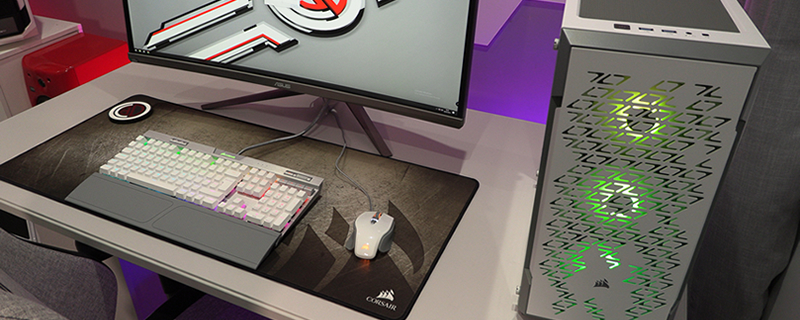Corsair iCUE 220T RGB Airflow Review
External and Internal Overview
When looking at the Corsair iCUE 220T RGB Airflow, three factors immediately come to mind. First of all, there’s the case’s clear tempered glass window, with Corsair opting for clear glass, rather than the smoked variety that’s common amongst enthusiast case designs.Â
Next up, we have the case’s front plate, which leaves space at its sides and cutouts at its front to enable the light from the case’s RGB fans to escape, while also allowing air en opportunity to enter the chassis. Third, we have the case’s PSU shroud, which supports both fan-facing-up and fan-facing-down configurations. Â
 Â
 Â Â
 Â
At the top of the iCUE 220T, we have space for two 120/140mm fans, which can be mounted in a variety of locations thanks to Corsair’s use of mounting slats, rather than specific mounting holes. This allows users of this case to mount their fans, or water cooling radiators, in ideal locations.Â
On top of this section, Corsair has placed a grey cover to act as a dust filter. adding some extra contrast to the case in the process.Â
At the rear of the 220T, Corsair has placed similar mounting slats on the case’s rear 120mm fan mount, again allowing users of this chassis to place their fans in ideal locations to enhance system airflow. At the rear of the case, a bottom-mounted dist filter for the system’s power supply is also accessible.Â
From these images, it is also clear that Corsair’s 220T lacks native support for vertical GPU mounting and supports a total of seven expansion slots.Â
 Â Â
  
 Â
Moving to the rear of the 220T, we can see that the enclosure offers plenty of space for cable clutter and ample room for your cable management needs. For starters, the case has three cable grommets up its left-hand side for cable routing, four cutouts at the top of the chassis for additional cable management and several cutouts at the base of the motherboard tray for front I/O cable routing.Â
Two 2.5-inch drives can be added to this enclosure using each of the system’s removable 2.5-inch drive mounts, while two 3.5-inch drives can be added to the larger 3.5-inch mounts below the case’s PSU shroud. This HDD cage is removable and must be removed for the case to support 360mm water cooling radiators.Â
Beside the case’s large CPU cutout, Corsair has added a Lighting Node CORE to the 220T, adding support for six RGB fans, with Corsair providing three with the enclosure. This LED controller can be connected to the user’s system using USB 2.0 and is powered using a single SATA connection.Â
 Â Â
 Â
Below is a closer look at Corsair’s Lighting Node CORE, which has enough space to install three additional Corsair RGB fans, filling all fan slots that the motherboard features at stock.Â
 Â Â
 Â
Thanks to the iCUE 220T’s allotment of cable routing holes, the case can offer users an incredibly clean aesthetic, with the shroud’s large cable management grommet providing an excellent location for users to show off their PSU’s braided cables. This is an ideal location to showcase braided cables with cable combs.Â
 Â Â
 Â
Even with all of the cable mess at the back of our iCUE 220T, it is easy to make a system within the case looking presentable, at least from the outside. Even builders with terrible cable management skills should be able to create a handsome looking system within this enclosure.Â






